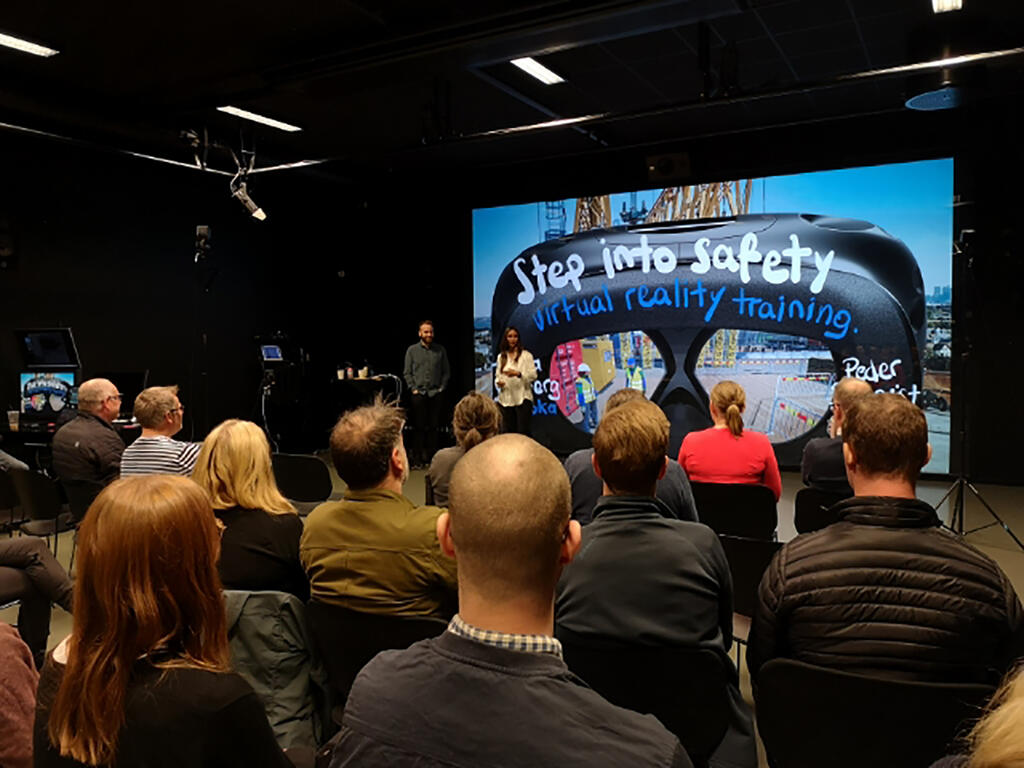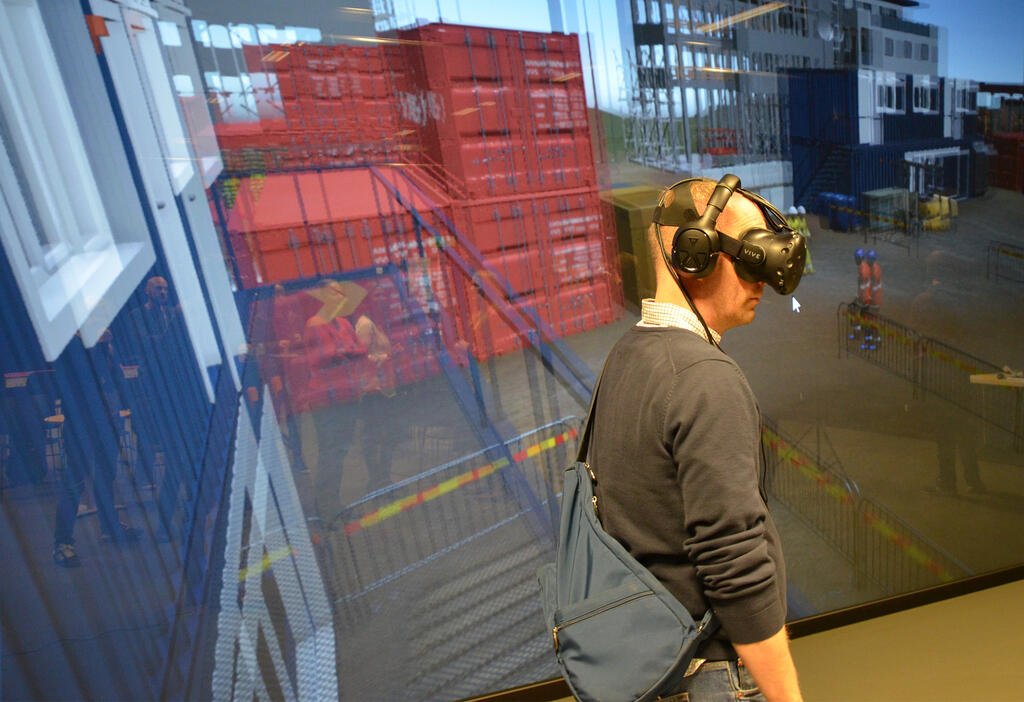VR to simulate dangerous situations on construction sites
Skanska has initiated and developed the project 'Step into Safety' in cooperation with VR and AR company OutHere. The purpose of the project is to improve safety on constructions sites by using VR to simulate dangerous situations. The goal is to bring about a long-term change in behaviour. This was all on the agenda when Skanska and OutHere held a seminar on safety on construction sites.

VR is used in the 'Step into Safety' project to recreate construction sites in a realistic way so that participants can experience situations that are perceived as dangerous and would result in damage if they occurred in reality.
'By simulating the risk that can arise on a construction site, an awareness is established in an entirely different way than simply hearing about it from someone else. The simulation leaves the experience in the muscle memory,' says Tania Sjöberg, head of competence and development at Skanska.
'By using VR, the experience is perceived by the individual and the hop is that the experience will have a greater effect on behavioural change for increased workplace safety than more traditional methods, such as e-learning,' says Peder Sandqvist, head of 3D graphics at OutHere.
When the project was begun, VR was not the only alternative and SKANSKA was looking at gamification in the form of a computer game. However, they were unable to see how it would lead to behavioural changes.
'What you take away from VR is based on your experience and not someone else's. The brain cannot differentiate between imaginary and reality,' says Tania.
The project has been lauded by the participants. This is mostly because the simulation left the participants with something to think about. Many participants have said that the PR experience gave them a different understanding of the risks that are present on construction site as compared with just reading about them. Several participants have also given good recommendations for other sectors that should do similar projects.
'All sectors with a risk of damage and dangerous situations can benefit just as much from this type of training as Skanska,' says Peder.
'Schools can use VR to simulate bullying in order to take a different approach to the problem, because the participants experience it themselves,' says Tania.
VR can also be used within various professions in order to simulate positive experiences, but it can also be used for educational purposes by allowing participants to try out different professions.
'There are many areas of application for VR. Geriatric care, for example, can use VR to let the elderly experience travel and outdoor environments. The travel industry can also use VR in combination with different rooms with heating and cooling to simulate the feeling of a travel destination,' says Tania.
After the seminar, the participants at Visual Arena had the opportunity to ask Tania Peder questions and test the project's VR simulation.


